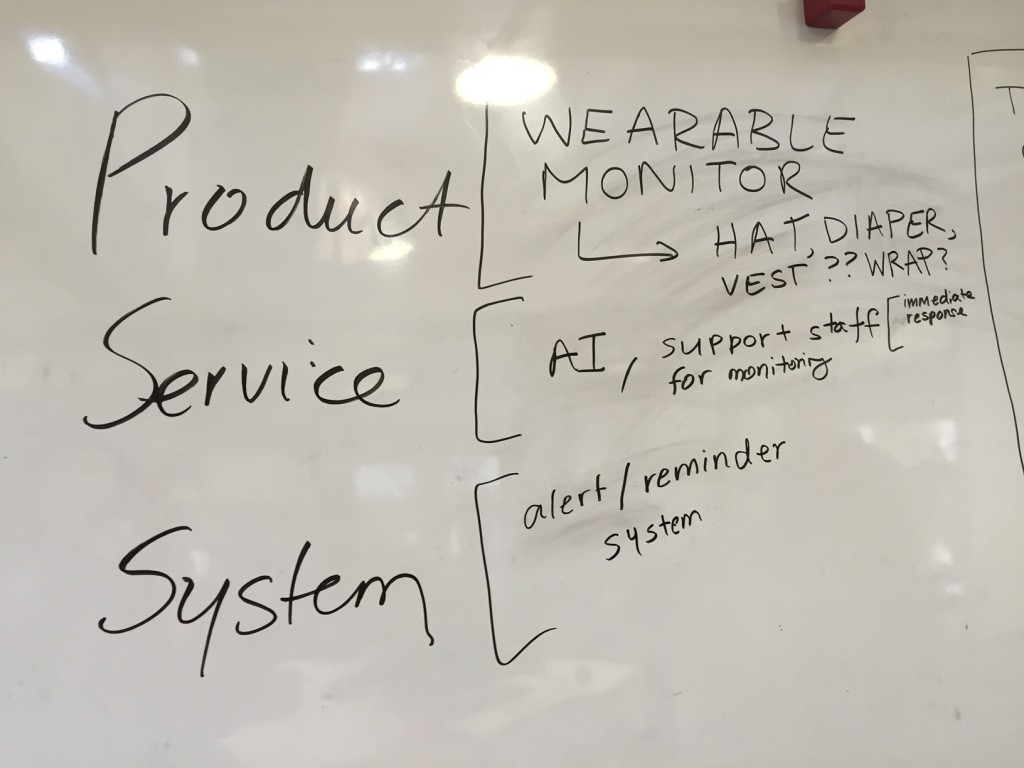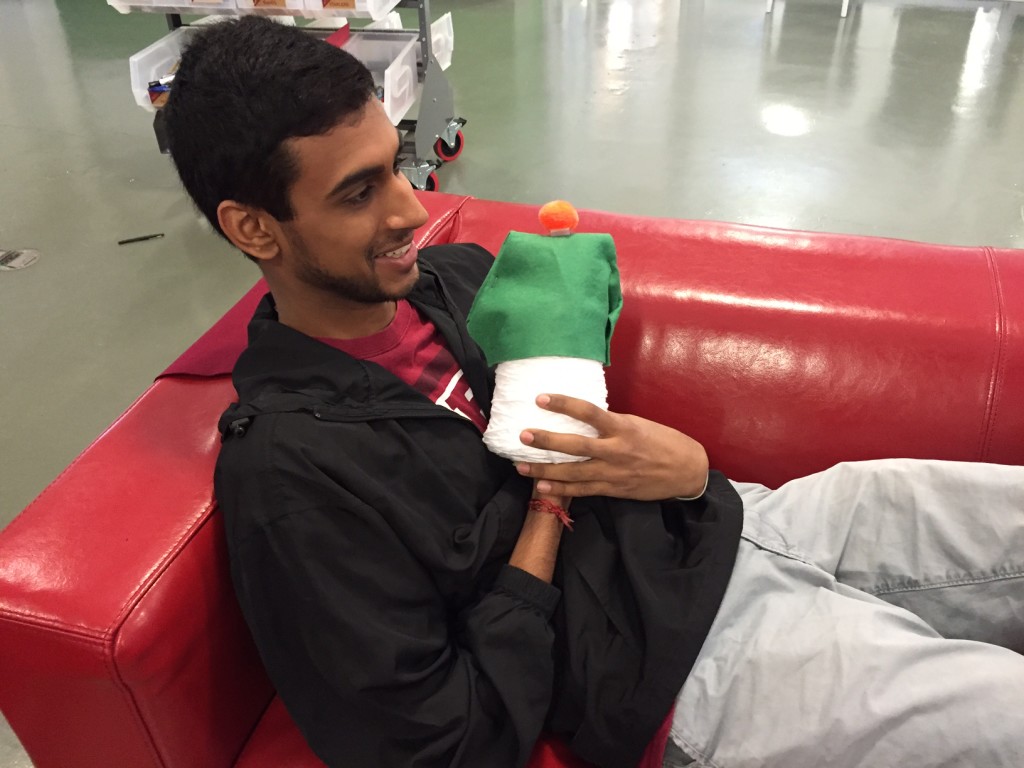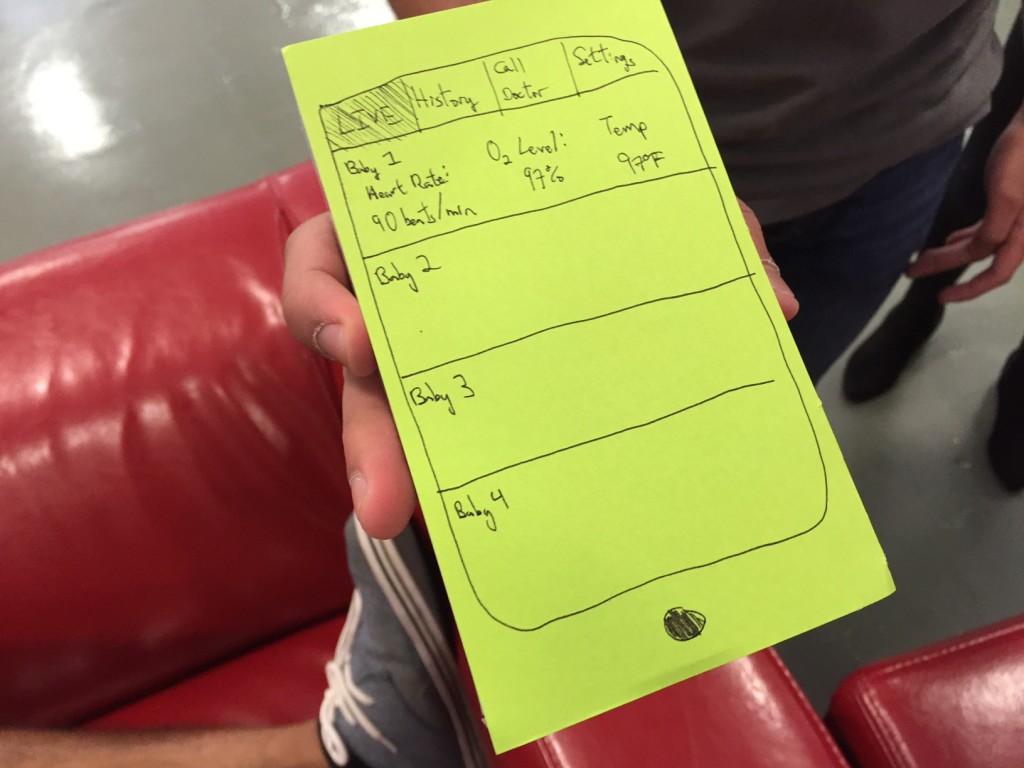This week our class launched into the brainstorming and prototyping phase of design. We ended last week on Thursday with an exercise that illustrates the power of attitude and response style when brainstorming with other people. (see embedded mp3 below):
This exercise is from “Only Human,” a podcast about health. Mary Harris, the creator of Only Human, did a series of podcasts about how we can all become better listeners. Listening is a skill very much linked to brainstorming etiquette. Many people think that listening is the same thing as waiting. Waiting… to get your bit in…without really absorbing what the other person has said first.
I then presented a slide deck on synthesis, which can be a little confusing, or maybe it was the way I explained it…in any case, the class seemed tentative. Despite the confusion, they self-organized into groups with common interests, picked a user, and started to create an empathy map. For homework, I asked the groups to develop a persona for their chosen user, and write at least three need statements, or “points-of-view,” based on their empathy work. I still sensed some reservations at the end of the class, so I went home and did the assignment myself, using Dr. Lee as my “user.” I then posted my work on the homework page so that the students had a template of what we were looking for. We think this helped because on Tuesday this week, students came in with great insights illustrated by their points of view. We then asked students to begin to think about how they might solve the problems they discovered through designing a product, system and service. We intentionally try to have students look at solving the problem they have discovered through various formats so that they can continue to “stay broad and diverge” before committing to a particular solution.
On Thursday, students presented their three solutions from the perspectives “product, system and service.” There was some blending of the three in some cases. For example, in Hadley and Hannah’s project, they presented a product, system and solution all in one skit in order to solve for their need statement: “L&D nurse needs a way to quickly and easily identify others in the room, and know where other clinicians are because of changing shifts and the fast-paced environment of the L&D unit.”
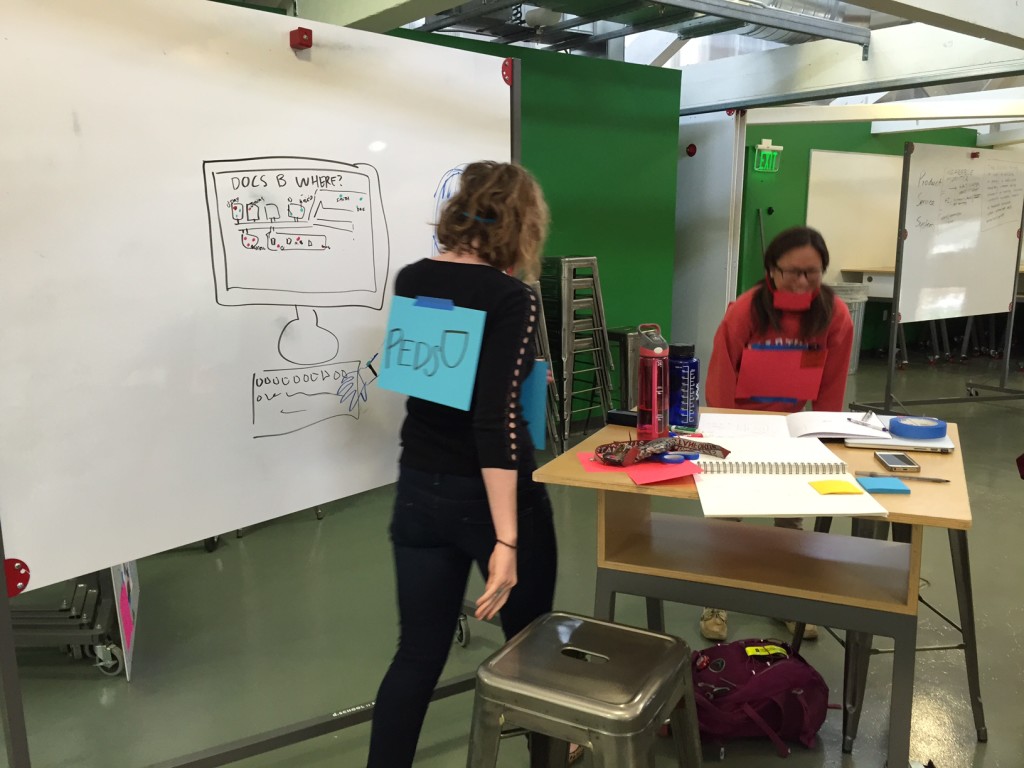
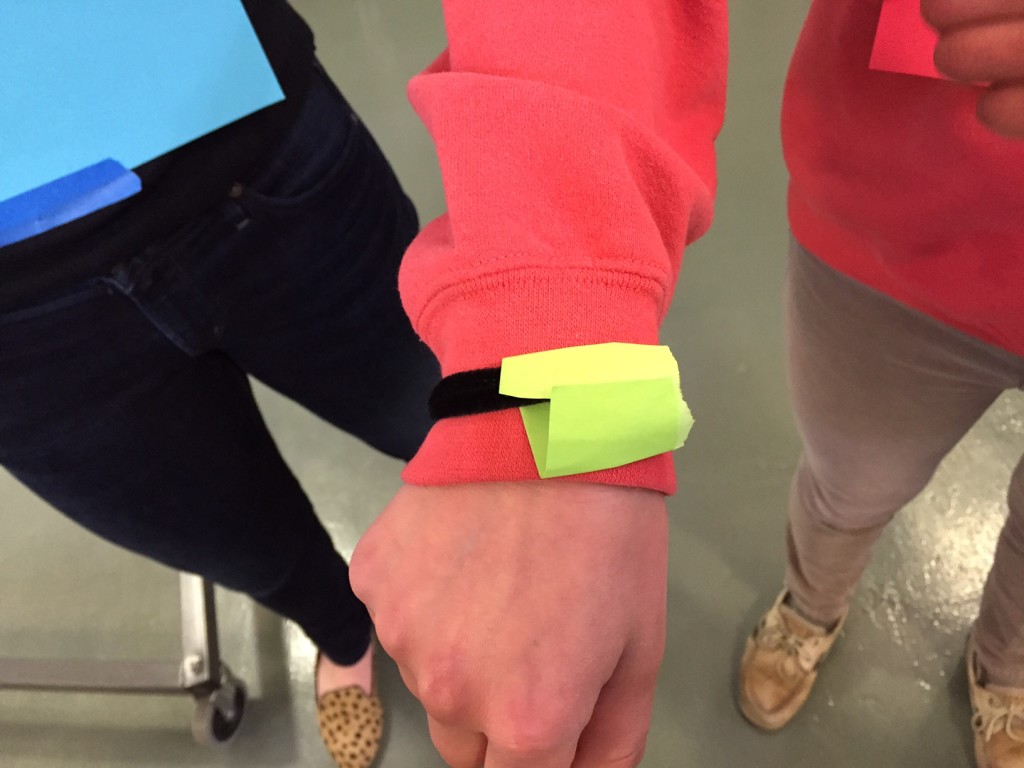 They connected a haptic, wearable device with a front desk software program, and color-coded scrubs so clinicians could be more easily identified. Another group (Albert, Emily, Karthik and Ribhav) were solving for this POV:
They connected a haptic, wearable device with a front desk software program, and color-coded scrubs so clinicians could be more easily identified. Another group (Albert, Emily, Karthik and Ribhav) were solving for this POV:
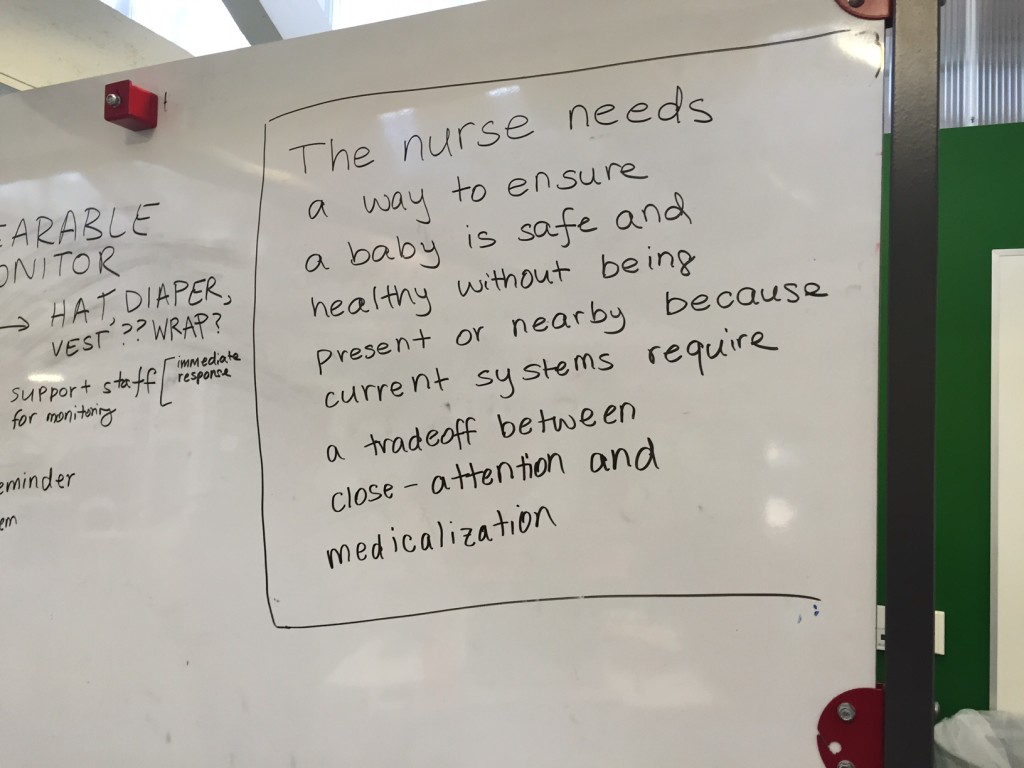 They chose to focus on the “well-baby monitoring issue” that’s started to gain attention in L&D. The phenomenon that well-babies are not monitored frequently enough, and in rare cases may suddenly stop breathing while experiencing skin-to-skin with mom or breastfeeding. Although fairly rare, case studies have been popping up. Enough to create concern. Some photos of their prototypes:
They chose to focus on the “well-baby monitoring issue” that’s started to gain attention in L&D. The phenomenon that well-babies are not monitored frequently enough, and in rare cases may suddenly stop breathing while experiencing skin-to-skin with mom or breastfeeding. Although fairly rare, case studies have been popping up. Enough to create concern. Some photos of their prototypes:
Lastly, Ana, Eesha and Jennifer attacked the problem of pain, in a very holistic way! They looked at developing a more friendly product for reducing inflammation after childbirth due to tearing or episiotomy.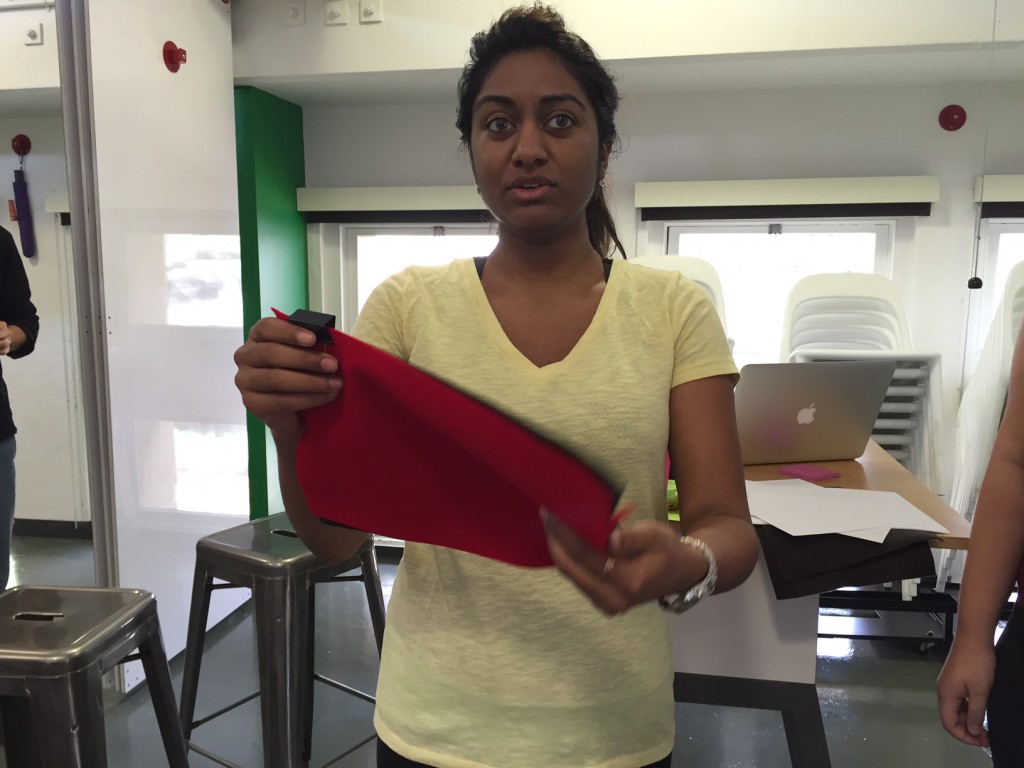
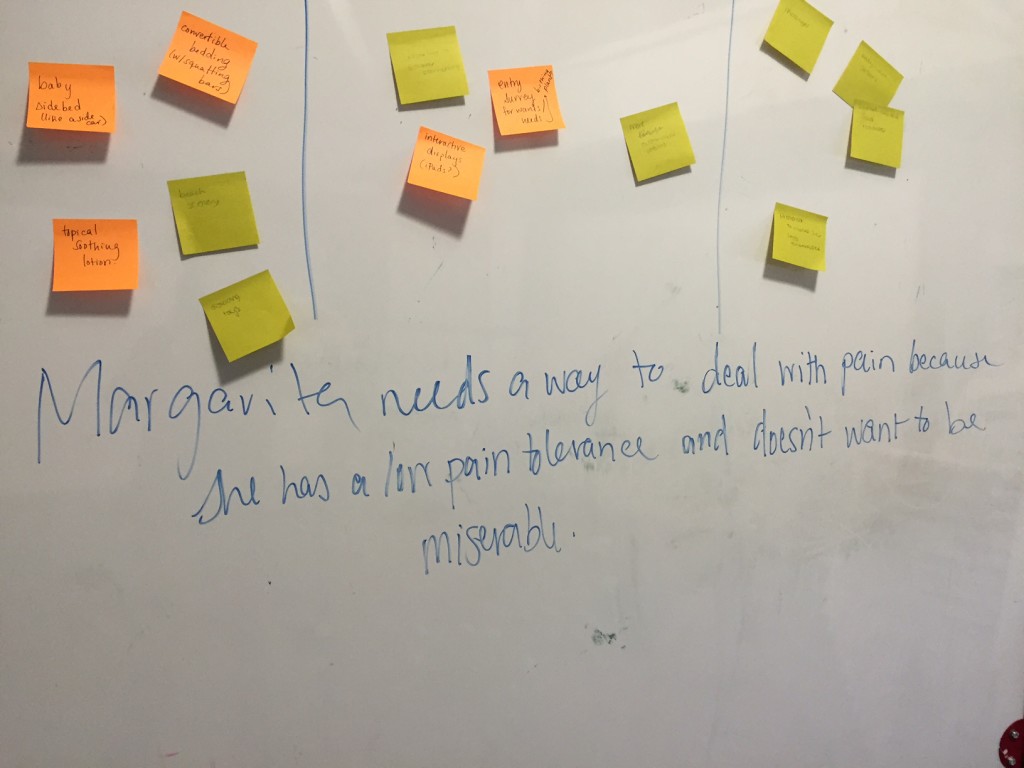 They considered the power of the ‘birth plan” and how broadcasting the wishes of the mom in the L&D room/OR could empower her, and help the clinicians make patient-centered decisions.
They considered the power of the ‘birth plan” and how broadcasting the wishes of the mom in the L&D room/OR could empower her, and help the clinicians make patient-centered decisions.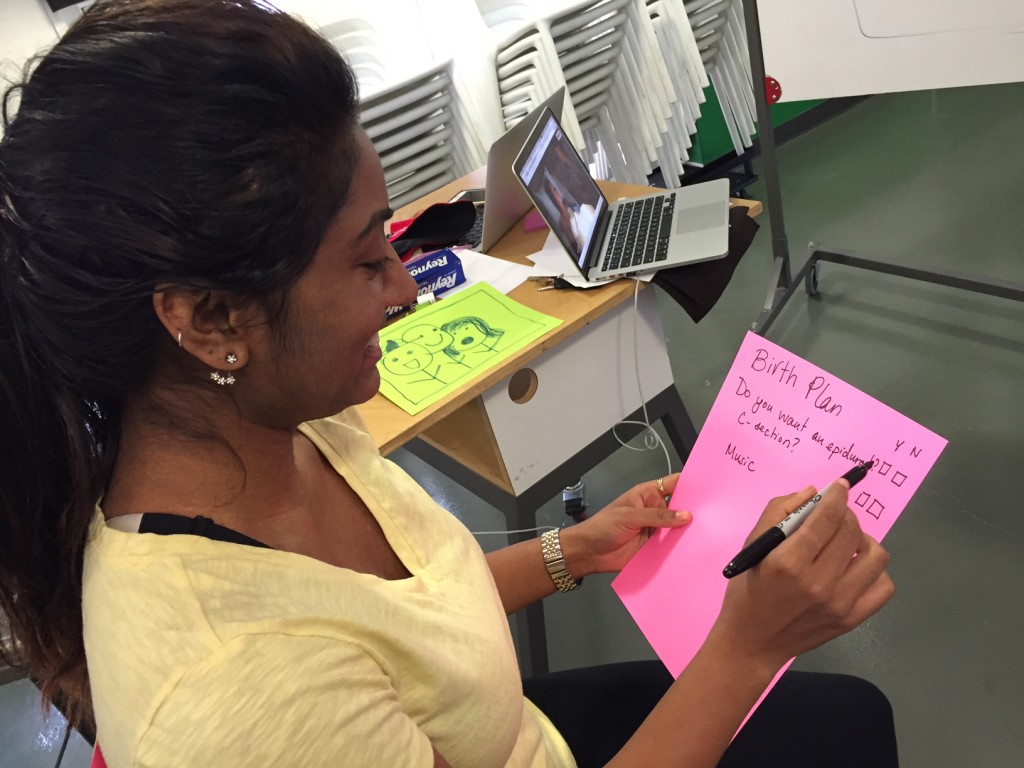
They also imagined how installing an iPad at the bedside could allow a woman to “invite” family members to her birth who might not be able to travel to the hospital. From a cultural perspective, this idea was very interesting to me. As Ana pointed out, in her culture, “When a woman has a baby, it’s like the entire family is having a baby. It’s a shared familial experience.” How might this option to connect with her loved ones reduce pain for a woman in labor?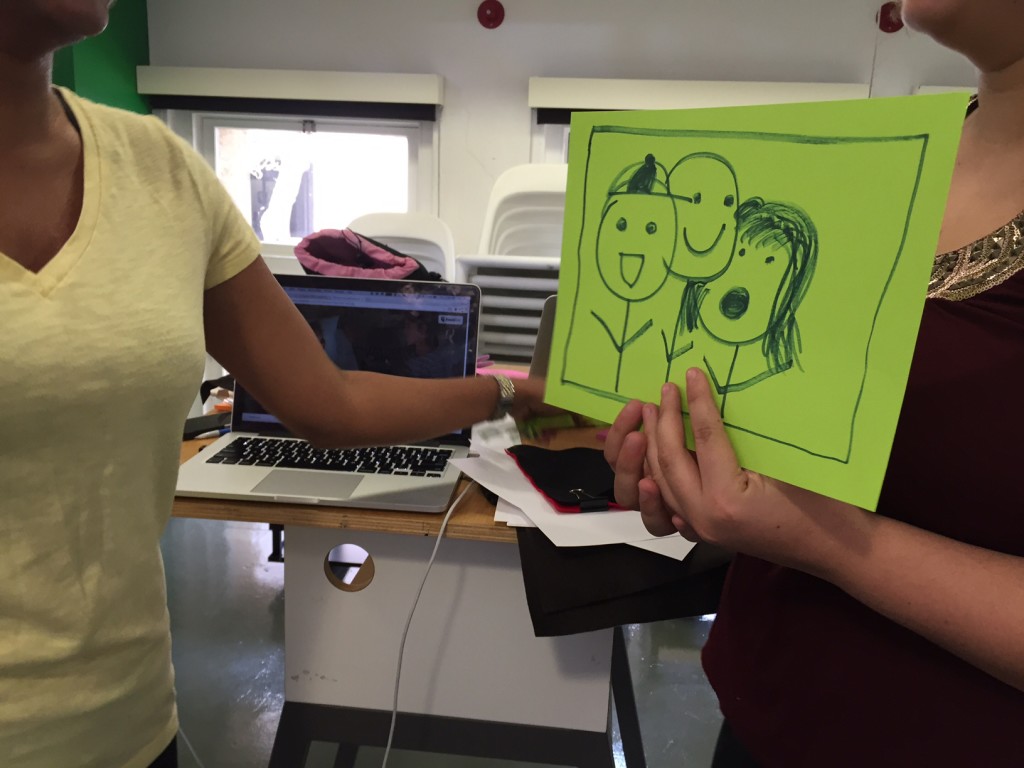
A special thanks to Dr. Anoop Rao, Clinical Neonatology Fellow at LPCH who came last Thursday to listen to student’s ideas and add to the conversation with his deep experience in both the medical environment and product development.

